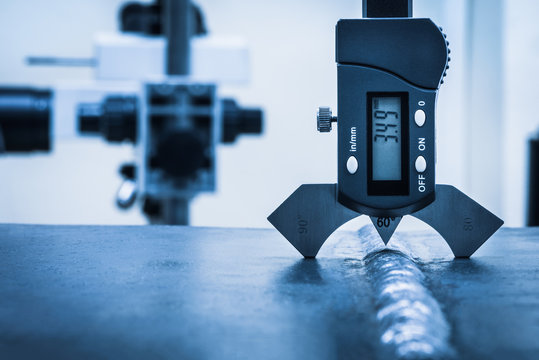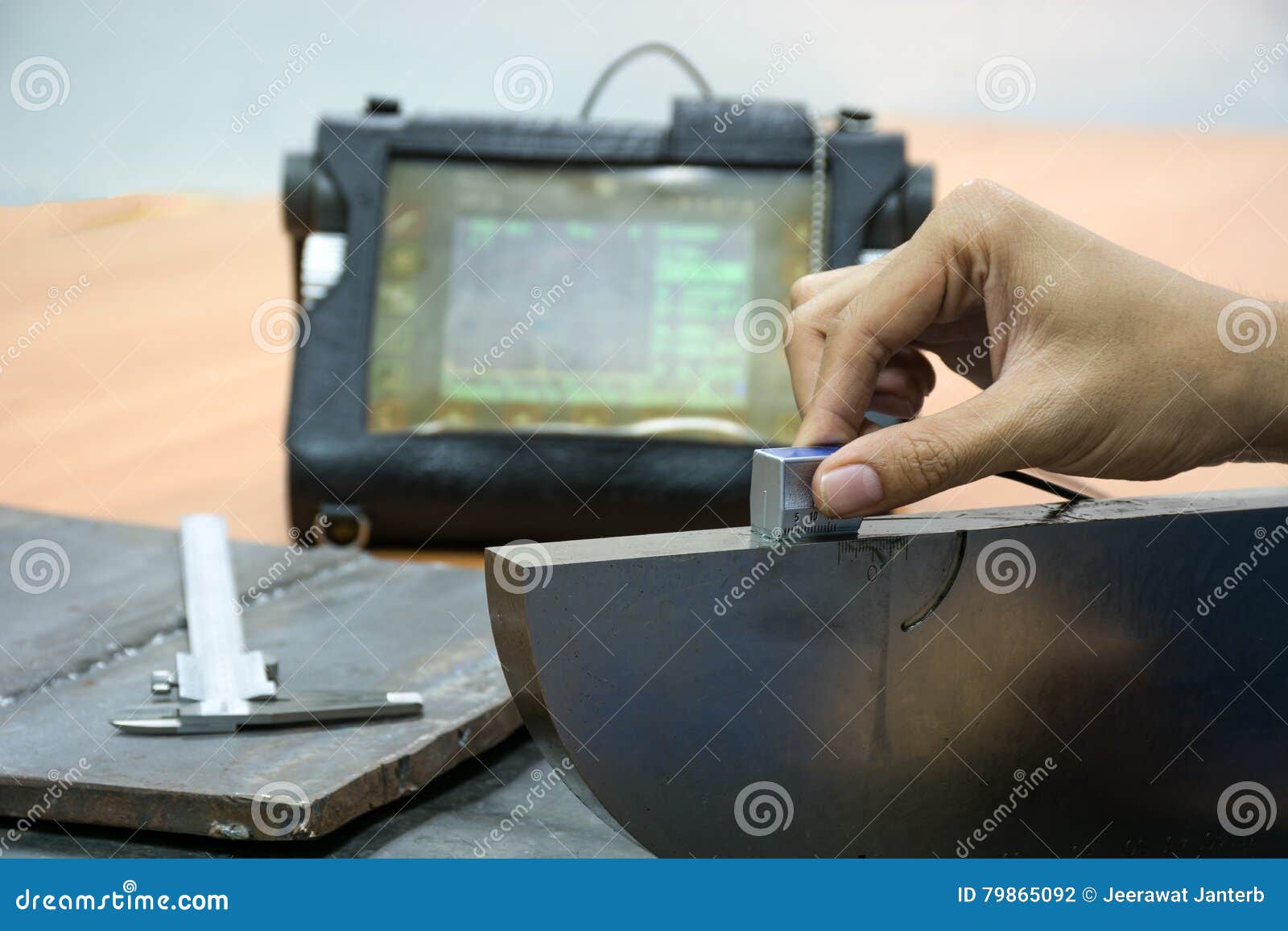Discovering the Right Provider for Welding Inspection Madison: Trick Considerations
Checking Out Advanced Tools and Methods for Accurate Welding Examination
In the realm of welding assessment, the pursuit of precision and reliability is vital, spurring the development of advanced tools and approaches. Laser scanning technologies and automated assessment systems, equipped with fabricated intelligence, are redefining the landscape by decreasing human mistake and improving safety measures.
Ultrasonic Testing Innovations
Ultrasonic screening innovations frequently represent the forefront of innovations in welding assessment innovations. These advancements have dramatically improved the ability to find and examine suspensions within welded structures, ensuring enhanced stability and safety - Welding Inspection Madison. Ultrasonic testing utilizes high-frequency acoustic waves to penetrate materials, supplying thorough information about interior features without creating damages. The most recent advancements in this area have focused on enhancing precision, speed, and the capacity to translate complex information.

Additionally, advancements in software application algorithms for data analysis have boosted the precision of issue discovery and sizing. Automated ultrasonic testing systems now supply high-resolution imaging, making it possible for detailed assessments of weld high quality. These systems are typically incorporated with innovative visualization devices, which facilitate the interpretation of results.
Radiographic Examination Methods
While ultrasonic testing technologies have established a high standard in non-destructive exam, radiographic assessment techniques continue to play an essential duty in welding inspection by supplying special understandings into product integrity. Radiographic testing (RT) uses the use of X-rays or gamma rays to permeate products, producing a radiograph that aesthetically represents the internal structure of a weld. This imaging capability is very useful for spotting subsurface problems such as porosity, additions, and fractures that might not show up with surface area examinations.
The process includes positioning a radiation resource on one side of the weld and a detector on the contrary side. Variants in material thickness and thickness impact the attenuation of the rays, producing a different picture that exactly defines defects. RT is especially helpful for examining complicated geometries and thick sections where various other approaches might drop short.
Despite its effectiveness, radiographic inspection must be performed with rigorous adherence to safety and security methods as a result of the harmful nature of ionizing radiation. The interpretation of radiographs requires knowledgeable workers, as the high quality of the evaluation directly influences the dependability of the evaluation. Recurring developments in electronic radiography are improving photo clarity and analysis efficiency, strengthening RT's crucial function in ensuring weld high quality.
Laser Scanning Advances
Embracing laser scanning modern technology in welding assessment has reinvented the analysis of weld quality and stability. This innovative method uses a non-contact, high-resolution means of catching thorough 3D information of weld surfaces. Unlike conventional examination techniques, laser scanning provides fast information procurement, considerably improving the performance and precision of weld evaluations. The technology utilizes laser light beams to develop precise 3D models, which are vital for comprehensive evaluation of weld measurements, surface area irregularities, and potential defects.
Laser scanning advancements have resulted in substantial improvements in identifying and detecting surface imperfections such as porosity, lack of combination, and damages. The high-resolution data enables assessors to execute thorough evaluations, guaranteeing that welds satisfy strict industry criteria. In addition, this approach supports the growth of electronic records, facilitating long-term quality control and traceability.
Furthermore, laser scanning innovation incorporates effortlessly with software application solutions made for automated flaw detection and analysis. The resultant data can be conveniently shared and assessed, promoting joint decision-making processes. As sectors proceed to demand higher standards for weld top quality, laser scanning stays at the center, providing unparalleled accuracy and efficiency in welding assessment.
Automated Inspection Equipments

Automated examination systems offer the benefit of consistency, eliminating human error and subjectivity from the evaluation process. They are made to run in numerous settings, from manufacturing floors to remote area websites, making certain detailed protection. Welding Inspection Madison. These systems can be set to stick to specific welding criteria and criteria, giving detailed records and paperwork for quality control purposes
Furthermore, the assimilation of cloud-based platforms promotes the storage space and evaluation of vast quantities of inspection data. This enables pattern evaluation and predictive maintenance, allowing makers to address prospective problems before they intensify. The fostering of automated evaluation systems is a pivotal step in the direction of enhancing the dependability and performance of welding processes in commercial applications.

Enhancing Safety and Effectiveness
A considerable element of boosting safety and security and effectiveness in welding examination lies in the assimilation of cutting-edge modern technologies that simplify procedures and minimize threats. The fostering of innovative non-destructive testing (NDT) techniques, such as ultrasonic screening, phased variety ultrasonic testing (PAUT), and radiographic screening, plays a pivotal role in guaranteeing structural honesty without compromising the safety and security of the employees entailed. These techniques enable extensive assessments with very little downtime, minimizing possible dangers related to conventional methods.
Furthermore, the execution of real-time information analytics and artificial intelligence formulas has actually transformed the means evaluation data is interpreted. By using predictive analytics, prospective problems can be identified prior to they manifest into important failures, making certain timely treatments and maintenance. This proactive technique considerably improves see here now functional effectiveness and security in welding processes.
Moreover, remote assessment technologies, consisting of drones and robotic crawlers furnished with high-resolution cameras, allow inspectors to examine hard-to-reach locations without exposing them to harmful conditions. This not only enhances examination accuracy yet also reduces human danger. By leveraging these innovative tools and techniques, markets can attain greater safety and security standards and operational effectiveness, eventually bring about more lasting and reliable welding assessment techniques.
Verdict
The integration of advanced tools and techniques in welding assessment dramatically boosts issue detection check out this site and guarantees structural integrity. Welding Inspection Madison. Developments such as phased variety ultrasonic screening, electronic radiography, and laser scanning enhance problem characterization, while automated examination systems and AI lower human mistake. Remote modern technologies assist in secure analyses in harmful atmospheres, promoting a proactive maintenance approach. These advancements not just enhance inspection efficiency yet also contribute to enhanced safety and security and quality control in commercial welding applications.

Ultrasonic screening developments regularly represent the center of innovations in welding evaluation modern technologies.While ultrasonic testing advancements have established a high standard in non-destructive evaluation, radiographic examination strategies continue to play an important duty in welding inspection by supplying special understandings into material honesty.Embracing laser scanning modern technology in welding inspection has reinvented the assessment of weld high quality and honesty. As industries continue to demand greater criteria for weld quality, laser scanning remains at the leading edge, offering exceptional accuracy and performance in welding assessment.
Automated inspection additional info systems provide the advantage of uniformity, getting rid of human mistake and subjectivity from the evaluation procedure.